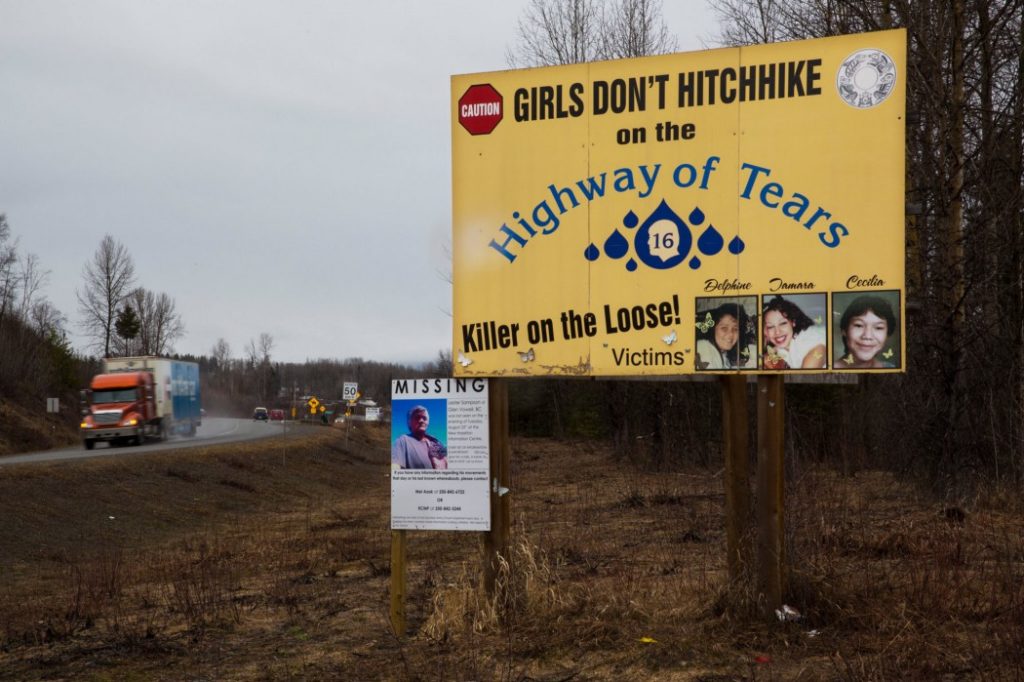
Responding to God’s Call to “Do Justice”
“I was listening to the Lord and to my heart.”
This is how the Safe Room along the Highway of Tears came about. A simple tugging on the heart and, as Bart Plugboer would testify, when you listen, God will use that to do good.
Bart Plugboer is the Diaconal Coach (formerly called Diaconal Ministry Developers or DMD) for Classis British Columbia North-West. Last January, coaches from across Canada met together in Abbotsford, BC, to share with and learn from each other. During that time, Bart asked for prayer around the “Highway of Tears,” a 724-kilometer stretch of road between Prince George and Prince Rupert in northern British Columbia. While this nickname at first may sound like hyperbole, it represents real pain and sorrow that many residents in northern BC have experienced.
Between the years 1989 and 2006, nine young women went missing or were found murdered along this stretch of Highway 16. By 2007, the RCMP had expanded their investigation of disappeared or murdered women to eighteen. Local residents maintain that there were, and still are, unofficial and unreported disappearances. The debate continues, but the vast majority of people in the northern part of the province believes the disappearances amount to over 30 women, many of which are of aboriginal descent. Some even say over 40.
Regardless of the evidence under investigation or an accurate figure, the reality of the injustice on this length of road remains. As followers of Jesus, we are called to do more than stand idly by. Bart believes that, too. The five Christian Reformed Churches that he serves as a DMD are all along this stretch of highway. So when, as Bart says, “the Lord put on my mind that I should do something about this,” he began to talk to the RCMP and local motels to work with him in establishing a Safe Room along this route. They agreed. Now, if RCMP officers see someone hitchhiking past 7:30 p.m., or need a safe place for a victim of domestic violence, they will put that person up in the room for the night.
Bart’s heart for justice and the way he lives it out is one example of how all Christians are called to “do justice” in their community. As Bart says, “all in God’s love I can do this.”
Will you, like Bart, listen to the Lord and to your heart, and allow God’s love to help you respond to injustice?
Diaconal Ministries Canada will get you and your church started. Contact our Justice Mobilizer, Cindy Stover (cstover@crcna.org) and check out our online resources.
Update (Oct. 2020)
The Highway of Tears was a part of a larger, national crisis of missing and murdered Indigenous women and girls. “This problem is not unique to British Columbia. Considered a national crisis by many Canadians, the federal government announced in 2015 that it would launch an inquiry into missing and murdered Indigenous women and girls. In that year, Carolyn Bennett, now federal minister of Crown-Indigenous Relations Canada, claimed that the national number of murdered and missing Indigenous women and girls in Canada is likely over 1,200.” -source
“The Highway of Tears worked very well,” recalls Bart today. “It was good at the time. We had about 25 hitchhikers come through this deacon outreach program. Houston CRC was quite involved. Three years into the program, in 2017, the government set up a small bus service that ran between the small towns here. Since then there has been no more hitchhikers that used our setup.”

Today one can see signs along the highway, warning people (particularly women) of the dangers of hitchhiking, but, as one article points out, the fact is that there is often no other option for people living in this area. “You still see people hitchhiking, sometimes ironically standing right near a sign warning them not to.”
An official Facebook page has been set-up, promoting a documentary that was released in 2015 and is dedicated to the victims of the Highway of Tears, writes director Matt Smiley. “The film, much like this page, is about building a stronger community for a better future. When we take what we learned from the past and apply it to the future, together we can make a change.”



